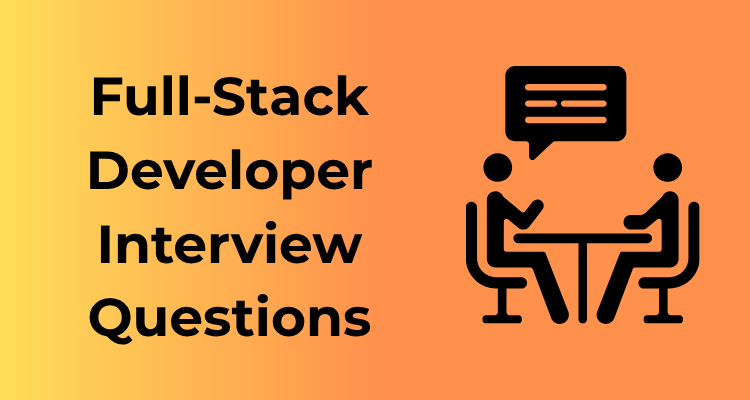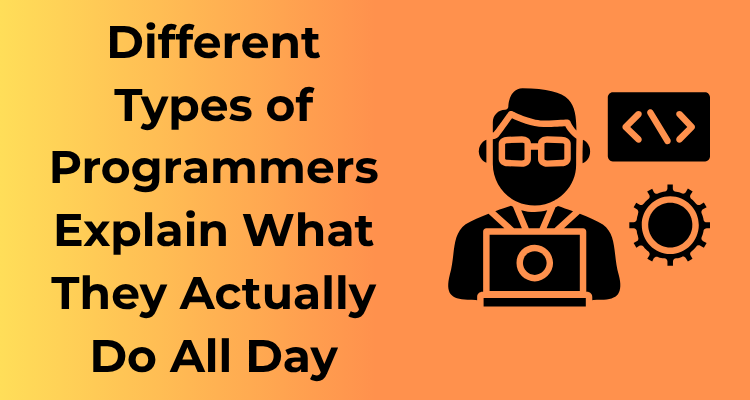If you’ve ever wondered what’s really behind the curtain in a software testing bootcamp, you’ve come to the right place! Let’s take a friendly, detailed dive into what these bootcamps are all about and what you can expect to learn — no jargon, no fluff, just clear and practical insights.
So, what’s the core of a software testing bootcamp?
In straightforward terms, these bootcamps are designed to build your foundation as a skilled software tester. Think of them as crash courses in understanding how software behaves, how to identify problems, and how to ensure solutions are rock-solid before they get to users.
Understanding How To Get Tech Into Without A Degree: Read More
You’ll start with the essentials, but don’t mistake “essentials” for “basic”! Bootcamps emphasize practical, real-world skill-building to turn you into a testing pro. Some of the major lessons include:
1. Fundamentals of Software Testing
- Why Testing is Important: Learn why testing can make or break a project — poor testing can mean launching a product riddled with issues, while great testing safeguards its success!
- Understanding Software Development Life Cycle: Before you test, you need to understand how software is made and where testing fits into the process.
- Types of Testing: Functional vs. non-functional, black-box vs. white-box, regression testing, and more; it’s like exploring a whole new vocabulary and skillset.
2. Developing a Tester’s Mindset
Bootcamps help you think critically and creatively. You’ll learn to see things from the end-user’s perspective, predict potential failures, and adopt a mindset focused on problem-solving. It’s not just about finding bugs but ensuring the product works flawlessly in different environments.
3. Writing Clear and Concise Test Cases
A crucial skill in testing is writing detailed test cases that outline what needs to be tested, how, and expected outcomes. Don’t worry if that sounds intimidating — bootcamps break it down step-by-step and provide templates so you can master this skill.
4. Testing Methodologies and Strategies
- Manual Testing Techniques: Learn step-by-step approaches for exploring and validating software visually and functionally.
- Boundary Testing & Equivalence Partitioning: Craft techniques for testing extreme cases and common scenarios effectively.
- Test Reporting: You’ll discover how to document your findings professionally and clearly for stakeholders.
5. Introduction to Debugging and Collaboration
You’ll also pick up the basics of debugging — it’s not just about finding the problem but collaborating with developers to fix it. This involves team communication, logging issues on platforms like JIRA, and contributing meaningfully to team workflows. Collaboration with developers and understanding their pain points is a game-changer in this field.
Why focus on the “core” matters?
Here’s the truth: the core skills you learn at a bootcamp are the foundation for everything else you’ll ever do as a software tester. Without a solid grip on the basics, diving deeper into areas like automation or advanced testing tools won’t have the same impact. Treat these core lessons as your golden ticket into the testing world!

Beyond Basics: Exploring Real-World Testing Scenarios During Bootcamp
Hey there! So, you’re curious about what makes a software testing bootcamp really exciting? Let’s dive into one of the most thrilling parts—taking your learnings *beyond the basics* and stepping into real-world testing scenarios. This is where all the classroom theory starts to come alive, and you get to feel like a true tester in action. Trust me, it’s where the magic happens!
What Are Real-World Testing Scenarios?
Great question! Real-world testing scenarios are simulations or hands-on experiences that closely resemble genuine situations testers face when working on actual software projects. Bootcamps carefully craft these setups so you can get your hands “dirty” solving real problems. It’s like preparing for a marathon by running on an actual track rather than only watching training videos—practice makes perfect, right?
Top Things to Expect When Tackling Real-World Problems
Ready for specifics? Here’s a sneak peek at what bootcamps might throw your way when it comes to real-world testing:
- Bug Hunting in Complex Systems: You’ll likely be handed broken software (on purpose!) and asked to find the bugs. Think of it as a thrilling treasure hunt for issues lurking in the code.
- Cross-Device Compatibility Testing: You’ll work on ensuring an application works seamlessly across devices like phones, tablets, and desktops. Yep, those odd visual shifts you see? Your job is to catch them.
- Test Case Design Challenges: You might be tasked with designing test cases from scratch that cover edge cases, happy paths, and everything in between.
- Debugging Under Pressure: In a real-world scenario, deadlines are a thing. Bootcamps often replicate the sense of urgency to prepare you for working under timelines while still delivering quality.
Teamwork: Just Like the Real Deal
Another cool aspect? Software testing bootcamps rarely let you work in silos. Most real-world projects require collaboration with developers, project managers, and other testers. Bootcamps simulate this by organizing group projects that teach you how to:
- Understand developer jargon without breaking a sweat.
- Negotiate testing priorities skillfully with stakeholders.
- Provide clear and actionable feedback so that bugs can be resolved efficiently.
Learning Through Iteration
In the real world, testing isn’t a one-and-done process. Bootcamps teach you to embrace iteration, encouraging you to keep improving your test plans and reports based on feedback. Messed up your first approach? No problem! Refine the process, learn from mistakes, and try again—it’s all part of the learning curve.
Confidence Boosters Through Practical Experience
By engaging with real-world scenarios, you come out feeling job-ready. You’ll walk away knowing how to identify issues, communicate effectively with teams, and adapt to complex, unpredictable situations. Plus, you’ll have a new appreciation for testing tools and strategies, since you’ve actually applied them under semi-realistic conditions.
From Manual to Automation: Tools You Will Learn to Master
When you think about software testing, one of the first questions that might pop into your head is, “What tools do I need to succeed?” Great question! A solid software testing bootcamp will not only teach you the concepts but also arm you with a wide array of tools that span from manual testing to automation. Let’s dive into these, shall we?
Getting Started with Manual Testing Tools
First things first, before you automate the world, you’ll need to understand manual testing. It’s the backbone of software testing and a crucial first step. During your bootcamp, you’ll get hands-on experience with tools like:
- Jira: An excellent project management tool for logging and tracking bugs during the manual testing process.
- TestRail: A tool used to create and manage test cases, ensuring thorough manual testing coverage.
- Postman: Often used for API testing, Postman allows testers to manually validate APIs before automation begins.
Mastering these tools will help you develop a keen eye for detail and refine your skills at spotting issues that automated tools might not catch immediately. Remember, even in a world dominated by automation, manual testing remains incredibly relevant and valuable!
Stepping Into Automation: It’s Time to Level Up
Once you’re comfortable with the basics of manual testing, it’s time to dive into the tech-savvy side of things: automation. Automation is the future of testing—it makes repetitive tasks more efficient and frees up time for you to focus on more complex testing scenarios. Your bootcamp will teach you to use industry-standard automation testing tools like:
- Selenium: Arguably the staple of automation testing, Selenium is a popular open-source framework for testing web applications. Want to become a pro at automating browser actions? This is your tool.
- Cypress: Known for its modern approach, Cypress is a fantastic tool for front-end testing, helping testers interact with applications in real-time.
- Appium: Focused on mobile apps, Appium enables testers to automate native, hybrid, and mobile web apps across different platforms like iOS and Android.
- Jenkins: A continuous integration tool, Jenkins works wonders when paired with automation testing. It helps in scheduling and managing automated test cases, ensuring a seamless workflow.
If these tools sound a little intimidating right now, don’t worry—the bootcamp will guide you step by step through their usage, ensuring that you not only know how to use them but also understand when and why they are important.
The Value of Knowing Both Manual and Automated Tools
You might wonder, “Once I learn automation, do I need to bother with manual testing at all?” Absolutely! The beauty of mastering both manual and automation testing tools is that it makes you versatile. You’ll be equipped to handle diverse projects and adapt to various testing needs. Imagine being that go-to person on your team who can fluidly shift between analyzing user behaviors manually and writing automation scripts!
Tips to Excel With These Tools
Here are a few actionable tips to help you get the most out of these tools:
- Focus on understanding the core functionality of each tool during the bootcamp rather than trying to master everything at once.
- Work on small projects or assignments provided during the course to practice using the tools in a practical setting.
- Don’t skip debugging exercises! Knowing how to troubleshoot issues with these tools is a skill employers value deeply.
By the time you graduate from your software testing bootcamp, you’ll not only feel confident with these tools but also have real-world scenarios under your belt that demonstrate your expertise. Excited? You should be! The journey from manual to automation is your ticket to becoming a highly skilled and in-demand software tester.
Industry Demands: How Bootcamps Align with Market Needs
If you’re here, chances are you’re curious about how software testing bootcamps can bridge the gap between your skills and what the industry is actually looking for. And trust me, you’re asking all the right questions! Let’s dive into what makes these bootcamps a hot favorite among aspiring testers and how they prepare you to meet market demands head-on.
Understanding the Industry Landscape
The software development world is evolving rapidly. With organizations racing to release polished products and user-friendly apps, the pressure to deliver top-notch software testing is immense. Companies today expect testers to go beyond just finding bugs. They want professionals who can think critically, collaborate with developers, and optimize testing strategies—basically, they want problem-solvers.
Here’s the deal: software testing bootcamps are designed with these exact industry needs in mind. They don’t just teach you how to “prove something is correct” but instead train you to ensure software performs under different scenarios. That’s the kind of value employers crave!
The Role of Market-Driven Curriculums
Great bootcamps don’t operate in silos; they’re constantly adapting to industry trends. For instance, as modern testing tools and Agile methodologies grow in popularity, bootcamps incorporate these into their curriculums so students stay relevant. Features like:
- Exploring Agile and DevOps setups
- Hands-on exposure to CI/CD pipelines
- Mastering cloud-based testing environments
These elements are built into programs to ensure that by the time you finish, you’ll be fluent in the language of real-world testing.
Emphasis on Practical, Job-Ready Skills
You know how employers want someone who can “hit the ground running”? That’s exactly what these bootcamps aim to deliver. Instead of focusing solely on theoretical knowledge, programs lean heavily on practical work. They expose students to:
- Bug tracking and reporting using modern tools like JIRA
- Collaboration with developers on live projects
- Simulating industry-level challenges to think on your feet
This hands-on work isn’t just good practice—it’s preparation. By the end, you’re solving the same kinds of problems you’ll encounter on the job.
Certifications & Industry Recognition
You might wonder: will my bootcamp qualification stand out? The answer is a confident yes, when you choose wisely. Many bootcamps align their training with globally recognized certifications like ISTQB, Selenium WebDriver expertise, or AWS certification for cloud testing. These credentials are like a stamp of approval for hiring managers, proving your skills meet the gold standard.
Networking with Industry Professionals
Here’s something many bootcamp grads rave about: networking opportunities. Bootcamps bring students face-to-face with real-world professionals, guest speakers, and even recruiters. These connections can help when seeking internships, mentorships, and eventually full-time roles.
Pro tip: Don’t hesitate to make the most of these sessions. Build relationships that will pay off long after the bootcamp ends.
A Stepping Stone to Confidence
Ultimately, successful bootcamps aren’t just about tools or techniques—they’re about empowerment. They’ll equip you with everything you need to step into interviews with confidence, knowing you’re perfectly aligned with what employers are hunting for.
Skills That Shine: Building a Strong Software Testing Portfolio
So, you’ve decided to embark on your software testing bootcamp journey—awesome choice! Now, let’s talk about one of the most crucial aspects of your career development: creating a strong portfolio that truly showcases your software testing skills and expertise. Think of your portfolio as your personal brand—it’s not just a collection of your work, but a way to communicate your capabilities, problem-solving methods, and dedication to the craft.
Why Is a Portfolio Important?
Let’s face it: recruiters and hiring managers want proof of your abilities. A polished portfolio screams, “I know what I’m doing!” rather than just relying on a resume filled with buzzwords. Your portfolio allows you to stand out from the crowd, especially in the competitive tech space where results matter more than anything else. Plus, it’s an opportunity for you to reflect on your growth, keeping track of all the exciting challenges you conquer.
What Should Go in a Software Testing Portfolio?
Your portfolio should provide a complete picture of your testing skillset, tools you’ve mastered, and the types of real-world challenges you’ve tackled. Here are the must-have elements for an impressive portfolio:
- Case Studies: Share detailed walk-throughs of real or simulated testing projects. Discuss what the application was, what the challenges were, and how you approached finding and solving bugs.
- Bug Reports: Include examples of well-documented bug reports. Make sure they’re clear, concise, and professional—this is a chance to demonstrate your attention to detail.
- Test Plans and Test Cases: Showcase your ability to create effective test plans by outlining scenarios, expected results, and approaches to improve quality assurance.
- Automation Scripts: If you’ve written automation scripts (Selenium, anyone?), showcase your code. Annotate it so it’s easy to understand, and highlight your reasoning behind specific approaches.
- Tool Proficiency Examples: If you’ve used testing tools like JIRA, Postman, or Jenkins, show tangible examples of your work. Explain how these tools improved efficiency or caught hard-to-trace bugs.
- Any Certifications or Projects Completed: Attachments or screenshots of certificates earned during the bootcamp are an excellent addition!
How to Present It All?
Now that you know what to include, let’s talk presentation. Remember, it’s not just about stuffing everything into one giant document. Presentation matters! Here are a few tips:
- Create a Digital Presence: A personal website or a LinkedIn profile is highly recommended to house your portfolio. Websites like GitHub or Behance are great for showcasing your technical projects and testing skills as well.
- Make It Easy to Navigate: Use clear sections to guide the viewer through your case studies, reports, and examples. Simplicity is your friend!
- Keep It Up-to-Date: Whenever you complete a new bootcamp project or learn a new tool, be sure to add it. This lets recruiters see that you’re continuously honing your skills.
- Get Feedback: Always run your portfolio by mentors or industry professionals for critiques. Their insights can help you polish it further!
Ready, Set, Build!
Building a standout portfolio takes time and effort, but remember—it’s an investment in your future. Through your software testing bootcamp, you’ll likely work on plenty of projects to include in your portfolio. Don’t just let them sit on your computer; show the world your skills! When an interviewer opens your portfolio and sees well-organized, impactful work, you’ll be significantly closer to landing that dream job. Go ahead—create something that shines!
The Role of Mentorship in Gaining Hands-On Testing Experience
Embarking on a journey to become a proficient software tester isn’t something you need to do alone. One of the most invaluable aspects of a software testing bootcamp is mentorship. A great mentor acts as both a teacher and guide, helping you bridge the gap between theory and practice. Let’s dive into why mentorship plays a pivotal role in shaping your testing expertise.
What Does a Mentor Bring to the Table?
Picture stepping into a room filled with testing tools, coding challenges, and industry jargon—and feeling lost. Now imagine having someone next to you who has been in your shoes and knows the ropes. Mentors provide:
- Real-World Insights: They share practical lessons from their own testing journeys, offering tips you won’t typically find in textbooks or online tutorials.
- Tailored Guidance: They recognize your strengths, areas needing improvement, and preferred learning style, tailoring their advice to help you progress effectively.
- Encouragement and Accountability: Learning technical skills can sometimes be overwhelming, but a mentor pushes you to persist while cheering you on every step of the way.
How Does Hands-On Experience Come Into Play?
Theories and frameworks are essential, but they won’t make you job-ready on their own. This is where mentorship shines. By working with an experienced mentor, you get direct exposure to real-world projects. Here’s how hands-on training with mentorship unlocks your potential:
- Contextual Problem Solving: Your mentor will walk you through real-life testing scenarios, such as analyzing bug reports or testing user interfaces, helping you sharpen your problem-solving skills.
- Guided Tools Mastery: They’ll show you how to use tools like Selenium, JIRA, or Postman effectively, providing shortcuts and best practices that only come from experience.
- Feedback Loops: Whether coding test scripts or debugging errors, your mentor will provide constructive feedback, helping you refine your skills in record time.
Building Confidence with One-on-One Support
One of the most common fears for new testers is wondering, “Am I doing this right?” A mentor replaces that uncertainty with assurance. Remember, they’re there to encourage growth, not perfection. Making mistakes under their guidance allows you to learn faster and with less pressure, leaving you well-prepared for real job environments.
Mentorship as a Networking Gateway
Here’s a little secret: mentors often open doors to professional opportunities. Many have vast industry networks, and they might introduce you to key connections. Whether it’s referring you for a testing position or linking you to tech communities, the relationships fostered through mentorship can accelerate your career trajectory.
Future Prospects: Entering the Workforce with Confidence
Diving into the world of software testing after a bootcamp may feel both exciting and a little intimidating. But here’s the good news: you’ve done the hard work by completing a specialized program, and you’re equipped with skills that employers are actively searching for. Let’s discuss how your future prospects are brighter than ever!
Standing Out in a Competitive Job Market
The tech industry is bustling, but it’s also highly competitive. Lucky for you, software testing is in demand, with automation testing, integration testing, and performance assessment becoming pivotal to delivering high-quality products. Companies are eagerly seeking testers who can ensure their applications run smoothly, and who better to fill that role than a bootcamp graduate who’s trained with practical, job-ready knowledge?
One of the advantages of attending a bootcamp is the focused approach to industry-relevant skills. Employers love to see tools like Selenium, Postman, and JIRA on a resume (and you’ve mastered them!). But remember, skill alone isn’t enough—you also bring the ability to problem-solve under pressure and think like both testers and end-users. These are game-changers in the hiring world.

Your First Steps: Landing That First Job
Whether you’re a career switcher or just entering the tech world, your confidence after the bootcamp will show. To enter the workforce seamlessly, start with these actionable tips:
- Craft a Killer Resume: Highlight your hands-on projects and bootcamp credentials. Use industry keywords like “QA process,” “test automation,” and “Agile methodology” to enhance discoverability.
- Leverage LinkedIn: Make connections with QA engineers, recruiters, and thought leaders in the tech field. Share insights or even small posts to engage with the community—visibility matters.
- Prepare for Interviews: Be ready to discuss real-world projects you handled during the bootcamp. Use the STAR (Situation, Task, Action, Result) method to explain your problem-solving strategies.
Remember, your training goes beyond the theoretical. Your ability to handle real-world testing scenarios gives you a big edge in tackling the most technical interview questions.
Career Growth as a Software Testing Professional
Your first role might be as a Junior QA Tester or Test Engineer, but don’t stop there! The beauty of software testing is that it offers plenty of room to grow. With experience, you can move up to roles like:
- Test Lead
- Quality Assurance Manager
- Automation Architect
- Performance Test Engineer
- Digital Transformation Analyst
Plus, as companies increasingly adopt Agile and DevOps practices, testing professionals are becoming a huge part of the development lifecycle. This opens up opportunities to work closely with cross-functional teams, making your role even more dynamic and rewarding.
Stay Ahead of the Game
The tech landscape changes constantly, so don’t stop learning even after landing that dream job! Explore new tools, attend webinars, contribute to open-source projects, and consider certifications like ISTQB or CP-SAT to upskill and stay relevant in the industry.
So, what does your future hold? A fulfilling, ever-evolving career where your skills will continue to make a tangible impact in one of the most vibrant industries. Trust in your training, keep learning, and remember—you’ve got this!









